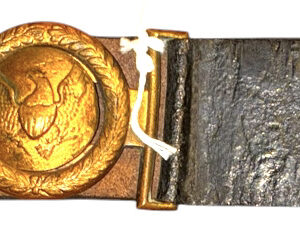ShopDecember 3, 2025
-

Model 1840 Palmetto Armory Heavy Cavalry Saber
$3,500Model 1840 Palmetto Armory Heavy Cavalry SaberDecember 3, 2025 -

Excavated Confederate Clipped Corner Brass Belt Plate from Sailor’s Creek
$275Excavated Confederate Clipped Corner Brass Belt Plate from Sailor’s CreekNovember 23, 2025 -

Confederate Georgia Excavated Gutter Back Georgia Frame Belt Buckle
$575Confederate Georgia Excavated Gutter Back Georgia Frame Belt BuckleNovember 19, 2025 -

Confederate Georgia Excavated Georgia Frame Belt Buckle
$525Confederate Georgia Excavated Georgia Frame Belt BuckleNovember 18, 2025 -

Sea Trunk of Admiral Joseph Lanman Captain of the USS Minnesota during the Bombardment of Ft. Fisher
$1,950Sea Trunk of Admiral Joseph Lanman Captain of the USS Minnesota during the Bombardment of Ft. FisherNovember 18, 2025 -

Excavated Confederate Forked Tongue Buckle
$600Excavated Confederate Forked Tongue BuckleNovember 16, 2025 -
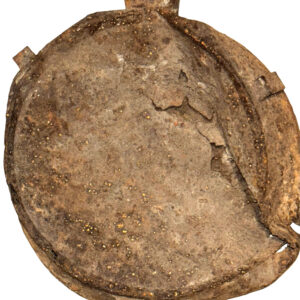
Dug Confederate Tin Drum Canteen
Dug Confederate Tin Drum CanteenNovember 11, 2025 -

Complete Dug M1858 Civil War Smooth Side Canteen
Complete Dug M1858 Civil War Smooth Side CanteenNovember 11, 2025 -

Early 1870s Unusual Ad in the Form of a Decorative Blotter for Purchasing Ex-Civil War Union Soldier’s Homestead Grants – Offered by a Former Officer in the USCT Heavy Artillery
Early 1870s Unusual Ad in the Form of a Decorative Blotter for Purchasing Ex-Civil War Union Soldier’s Homestead Grants – Offered by a Former Officer in the USCT Heavy ArtilleryNovember 10, 2025 -
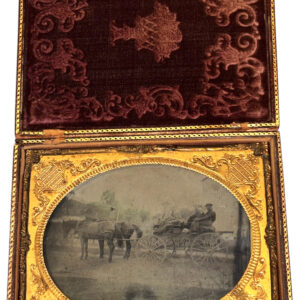
RESEARCH REVEALS SIGNIFICANT NEW INSIGHT INTO THIS IMAGE – Rare Outdoor Image of Two Armed Confederate Sailors with Two Union Captives from Union Ship the Alice Price
$2,350RESEARCH REVEALS SIGNIFICANT NEW INSIGHT INTO THIS IMAGE – Rare Outdoor Image of Two Armed Confederate Sailors with Two Union Captives from Union Ship the Alice PriceNovember 9, 2025 -
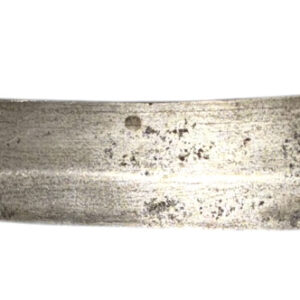
Large Clipped Point Civil War Period Stag Grip Bowie Knife
$1,850Large Clipped Point Civil War Period Stag Grip Bowie KnifeNovember 9, 2025 -
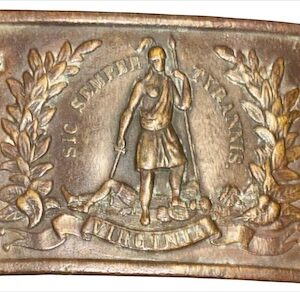
Die-Struck Excavated Sheet Brass Virginia Waist Belt Plate
Die-Struck Excavated Sheet Brass Virginia Waist Belt PlateNovember 8, 2025 -
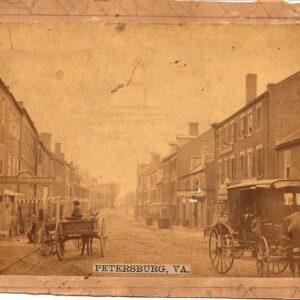
Rare, 1865 Large Format Civil War Albumen of Petersburg, Va.
$550Rare, 1865 Large Format Civil War Albumen of Petersburg, Va.November 4, 2025 -
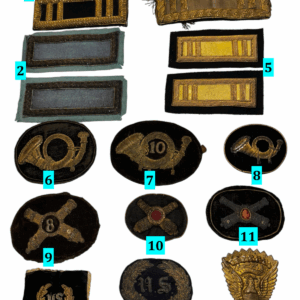
Group of Civil War Officer’s Rank Straps and Cap Insignia
Group of Civil War Officer’s Rank Straps and Cap InsigniaNovember 4, 2025 -
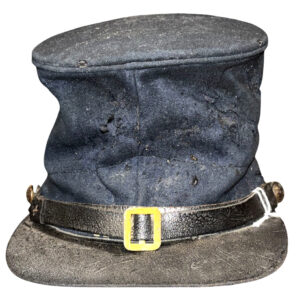
Civil War Type II Federal Issue Enlisted Man’s Forage Cap
$3,150Civil War Type II Federal Issue Enlisted Man’s Forage CapNovember 4, 2025 -
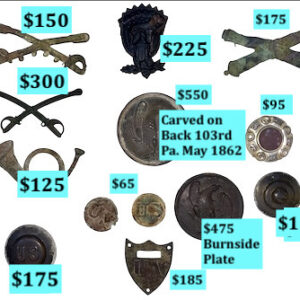
Group of Excavated Civil War Insignia and Breast Plates
Group of Excavated Civil War Insignia and Breast PlatesNovember 1, 2025




